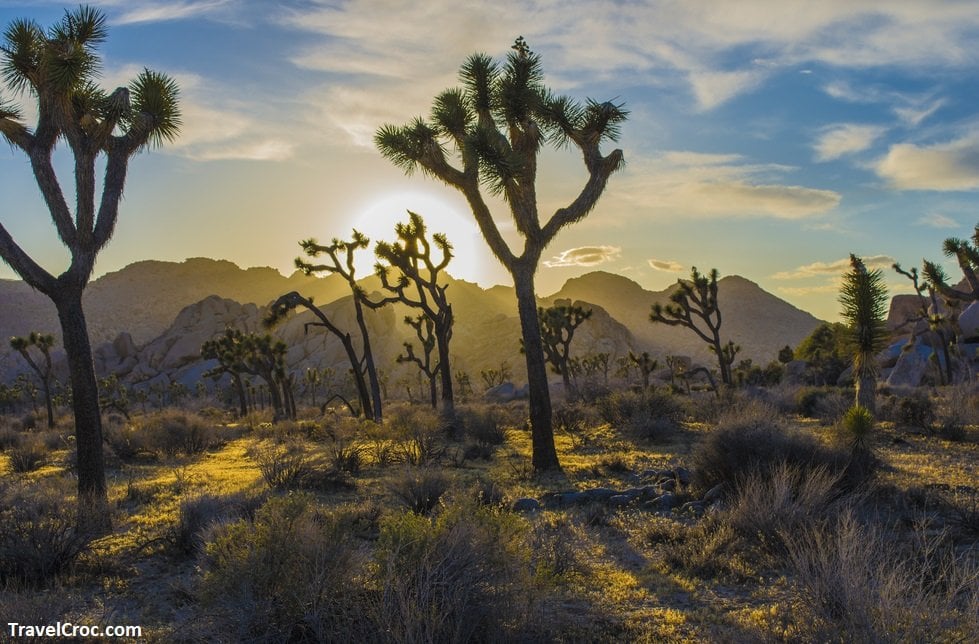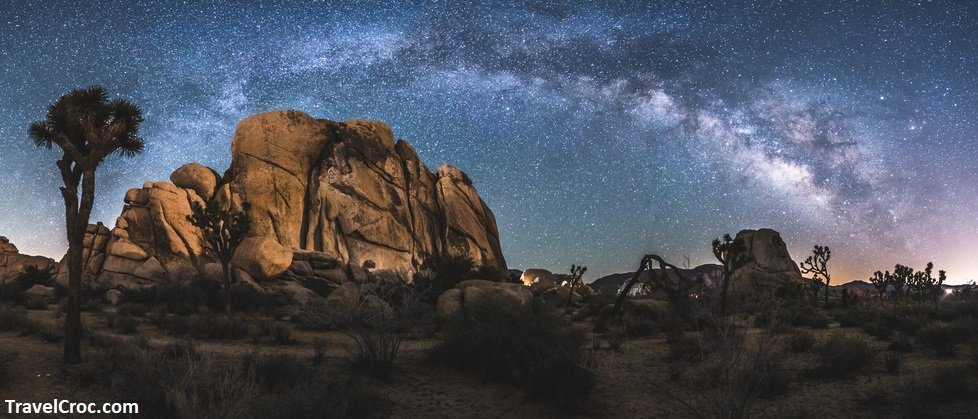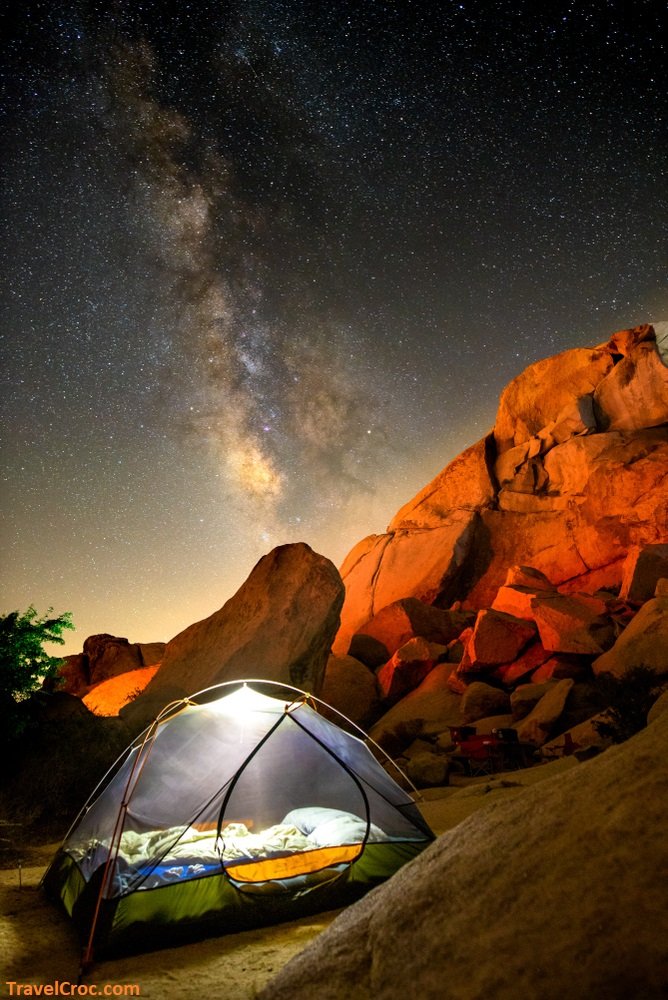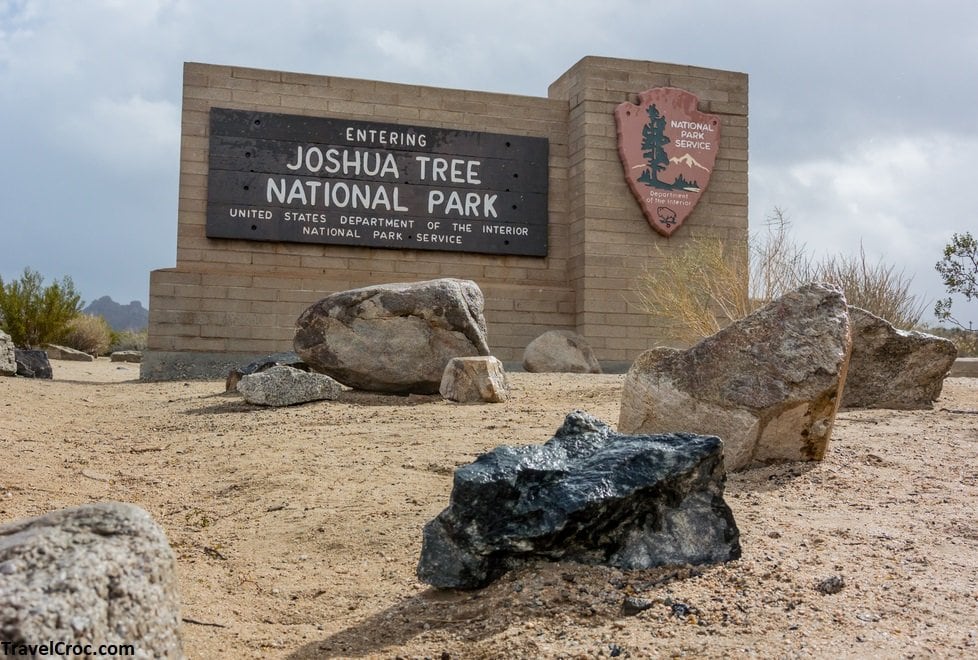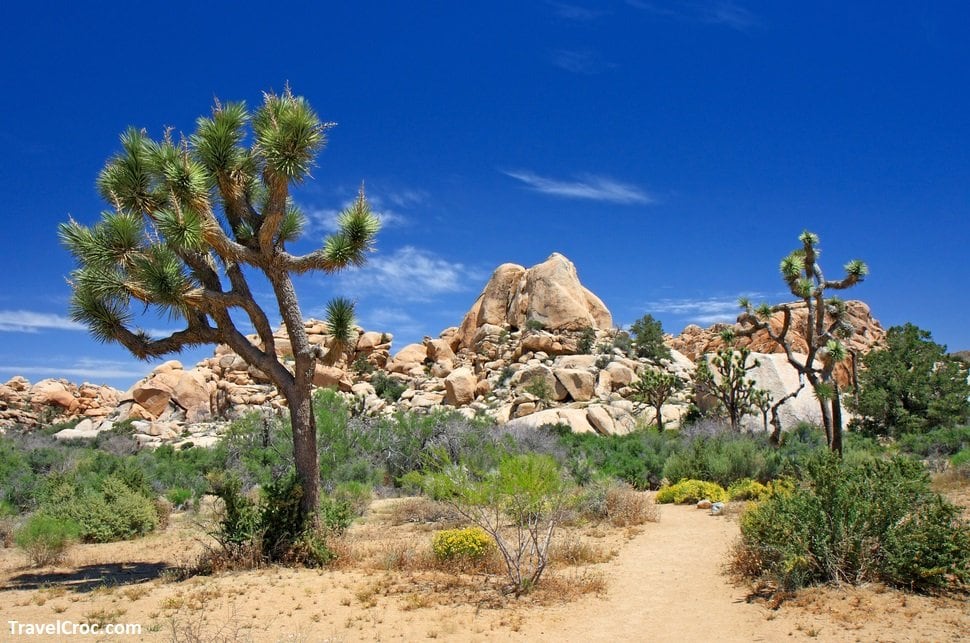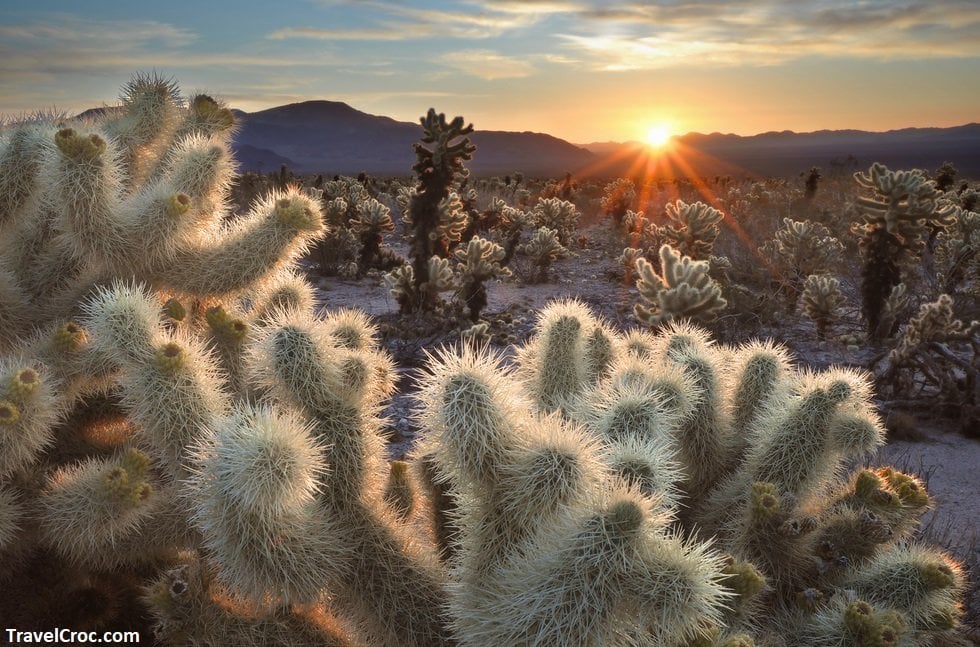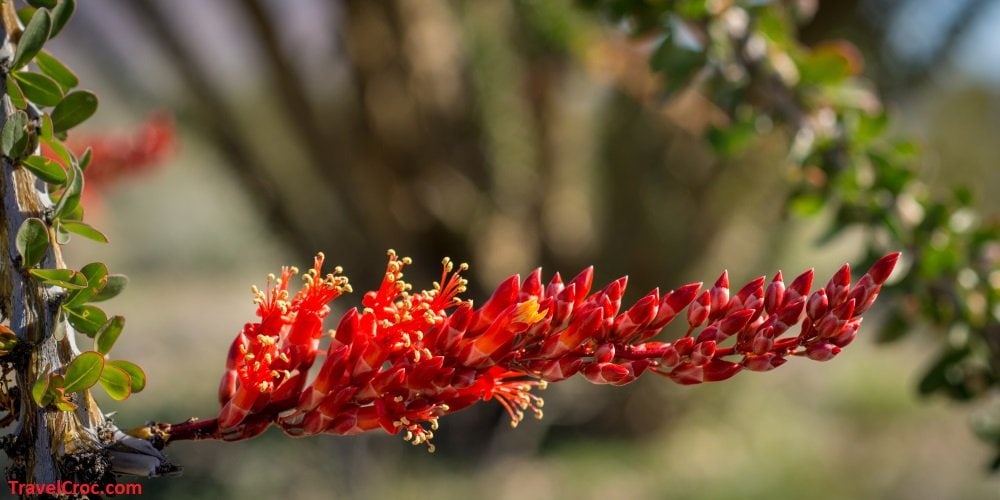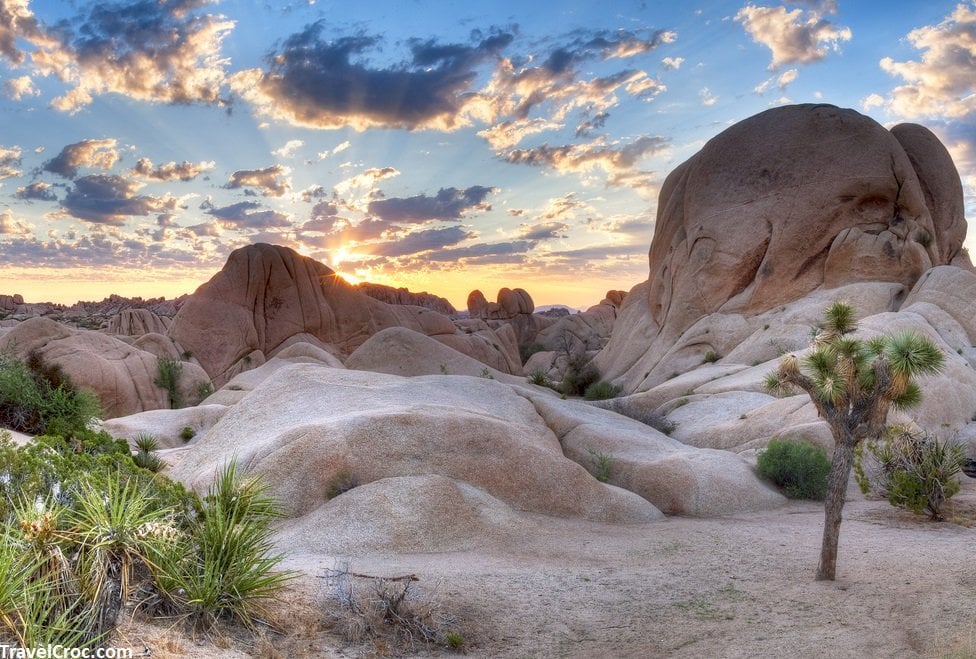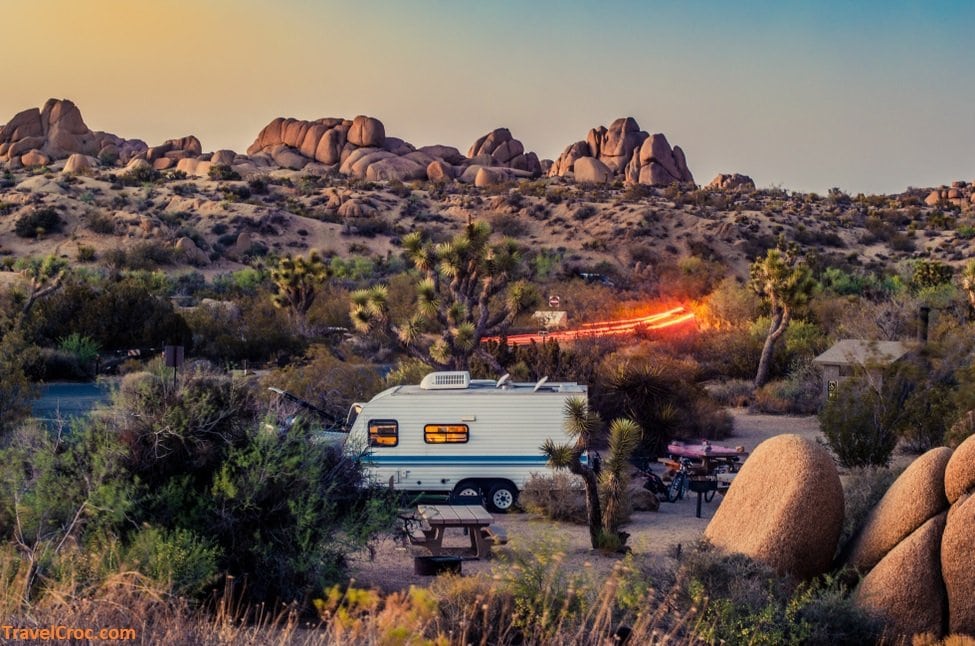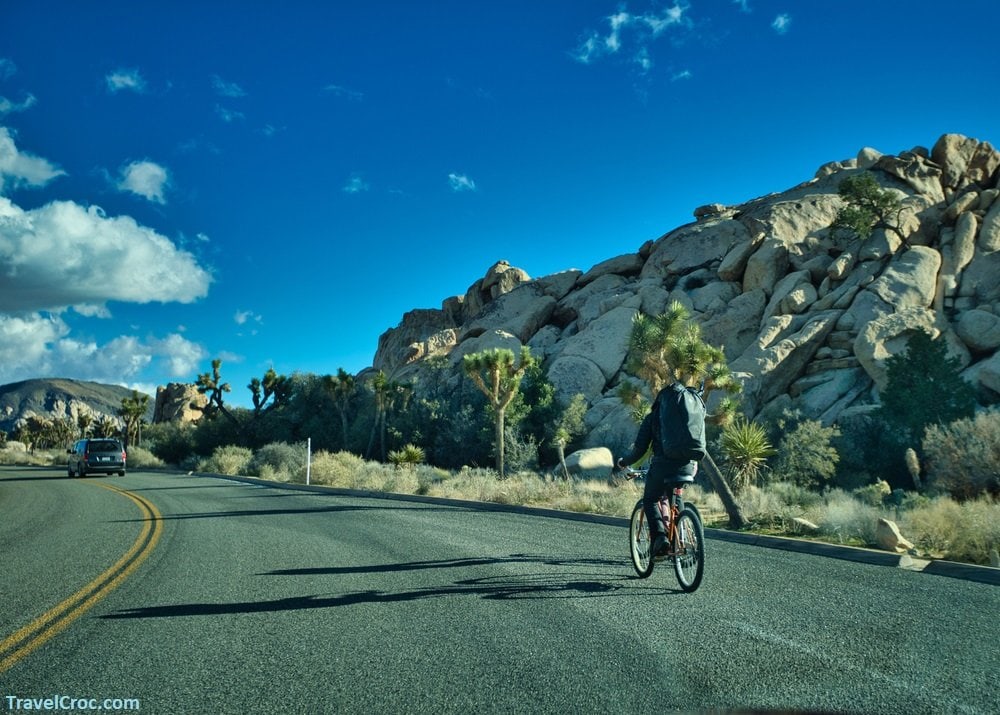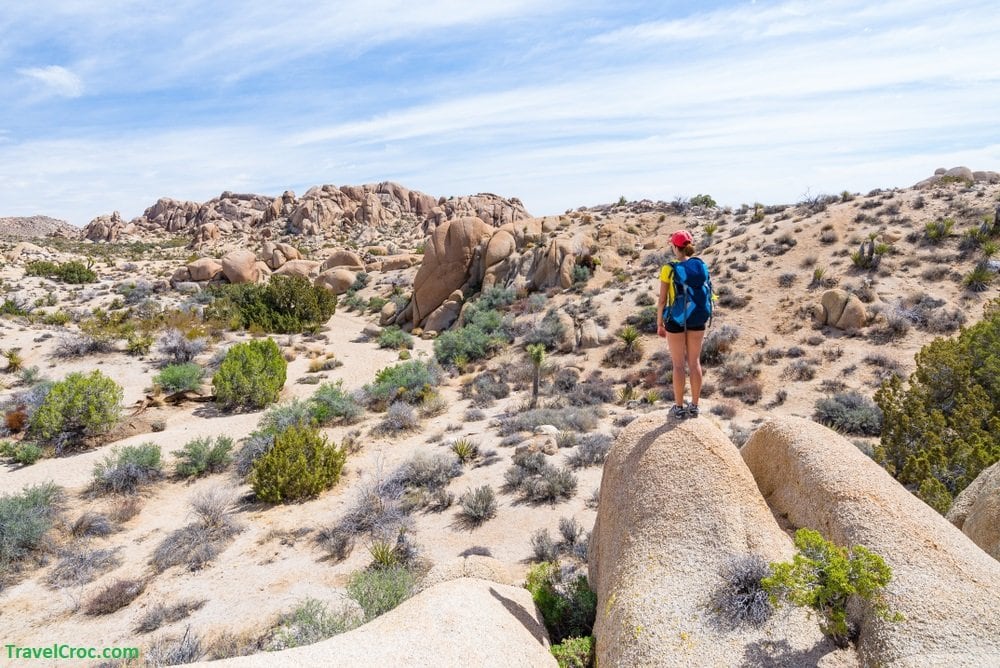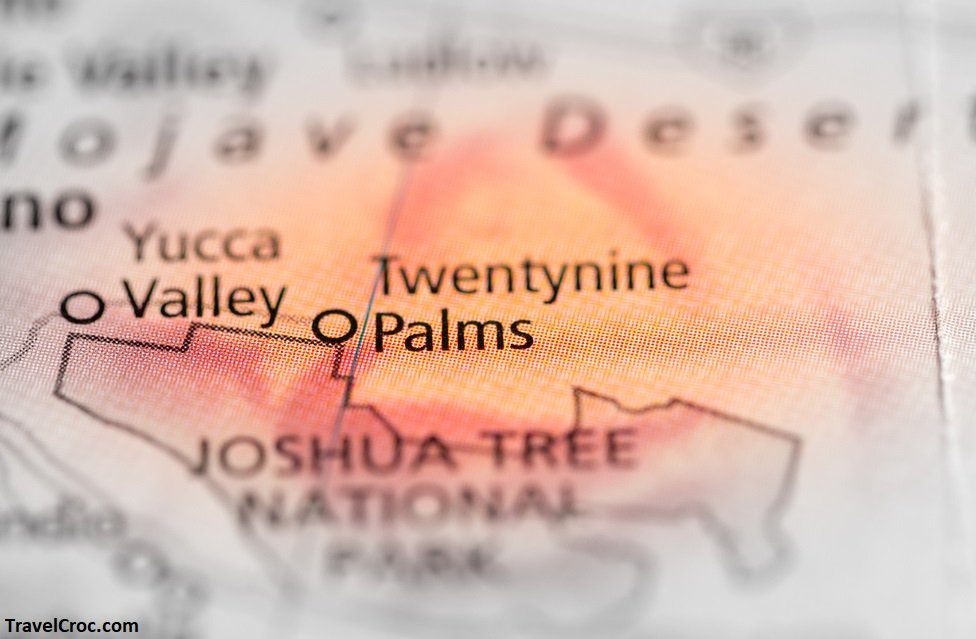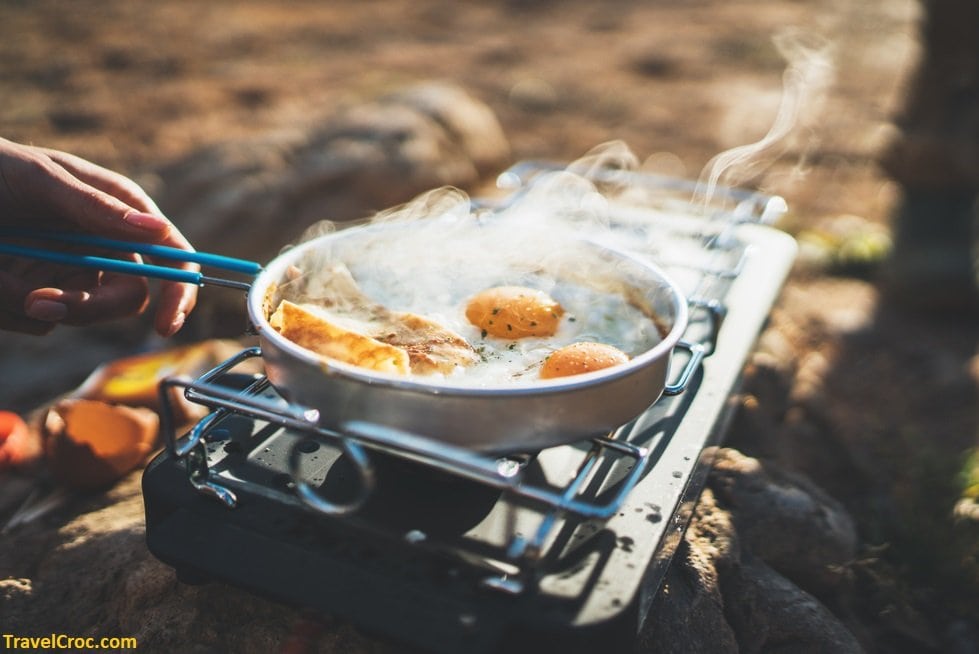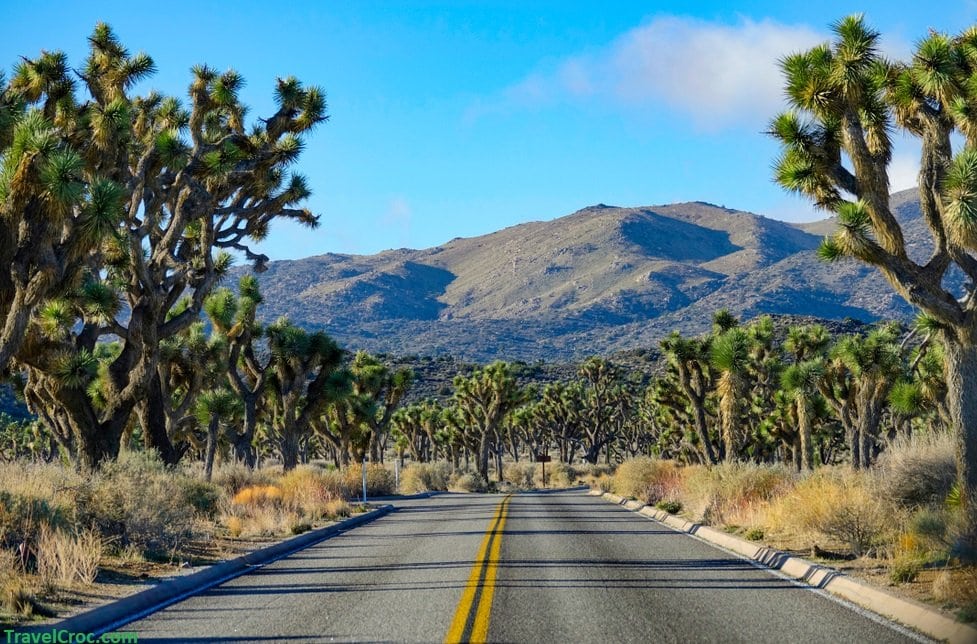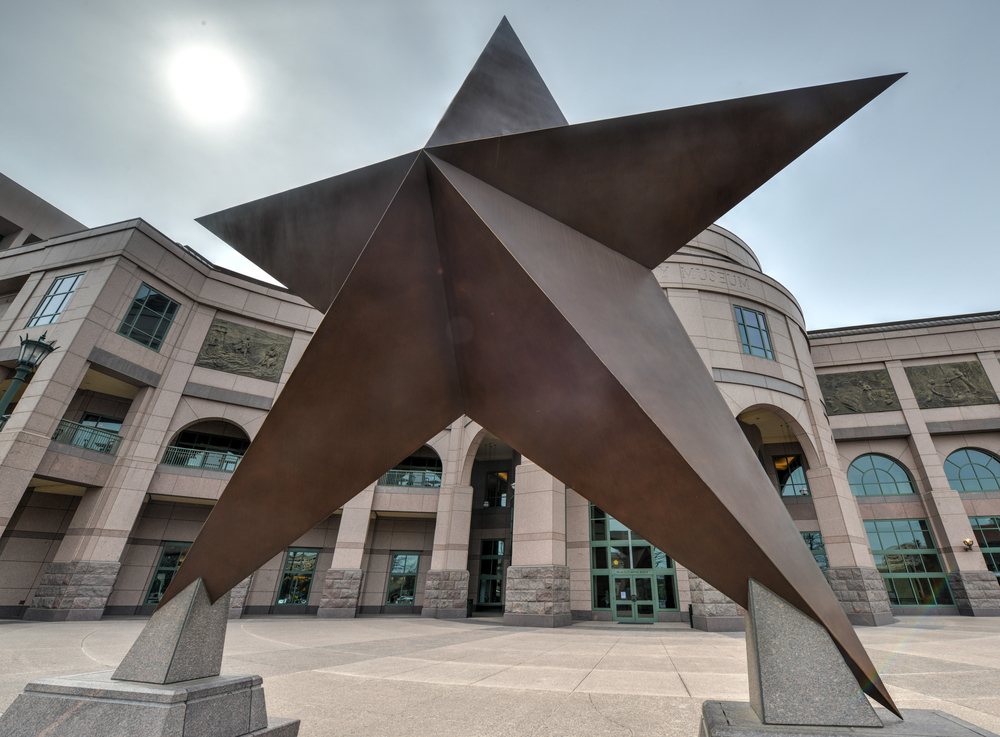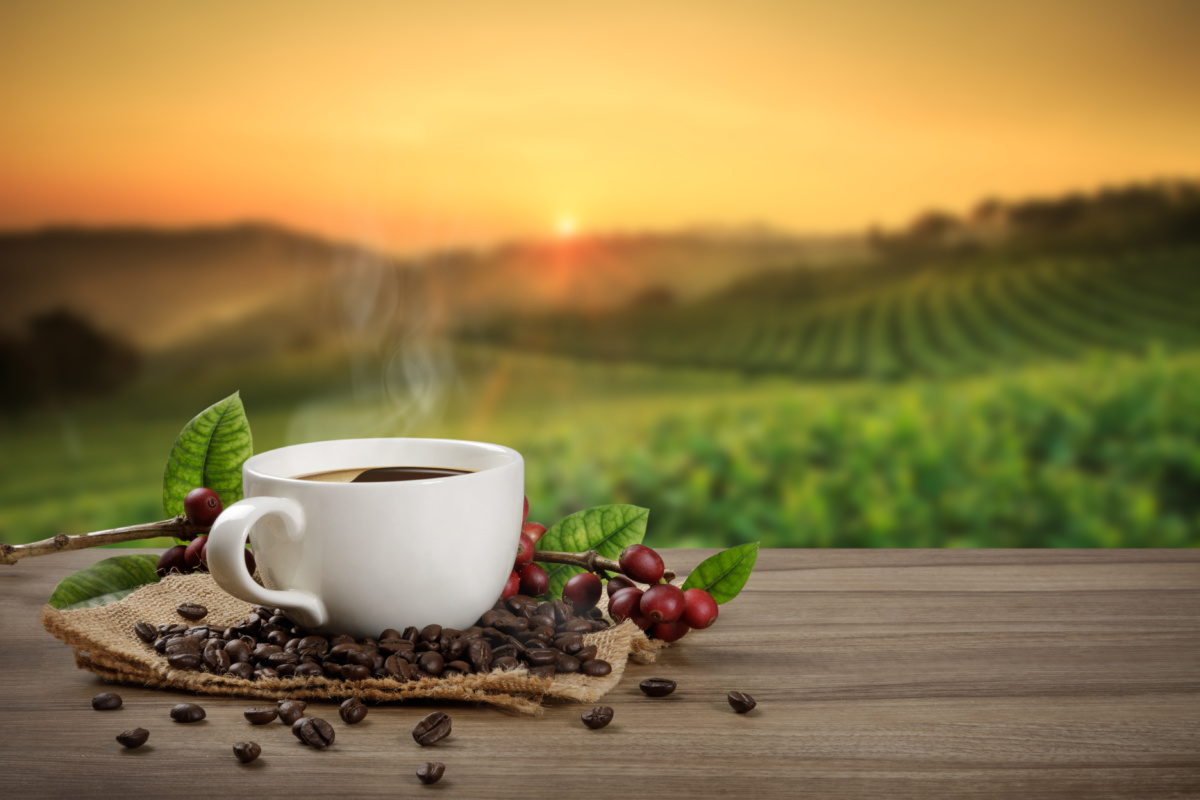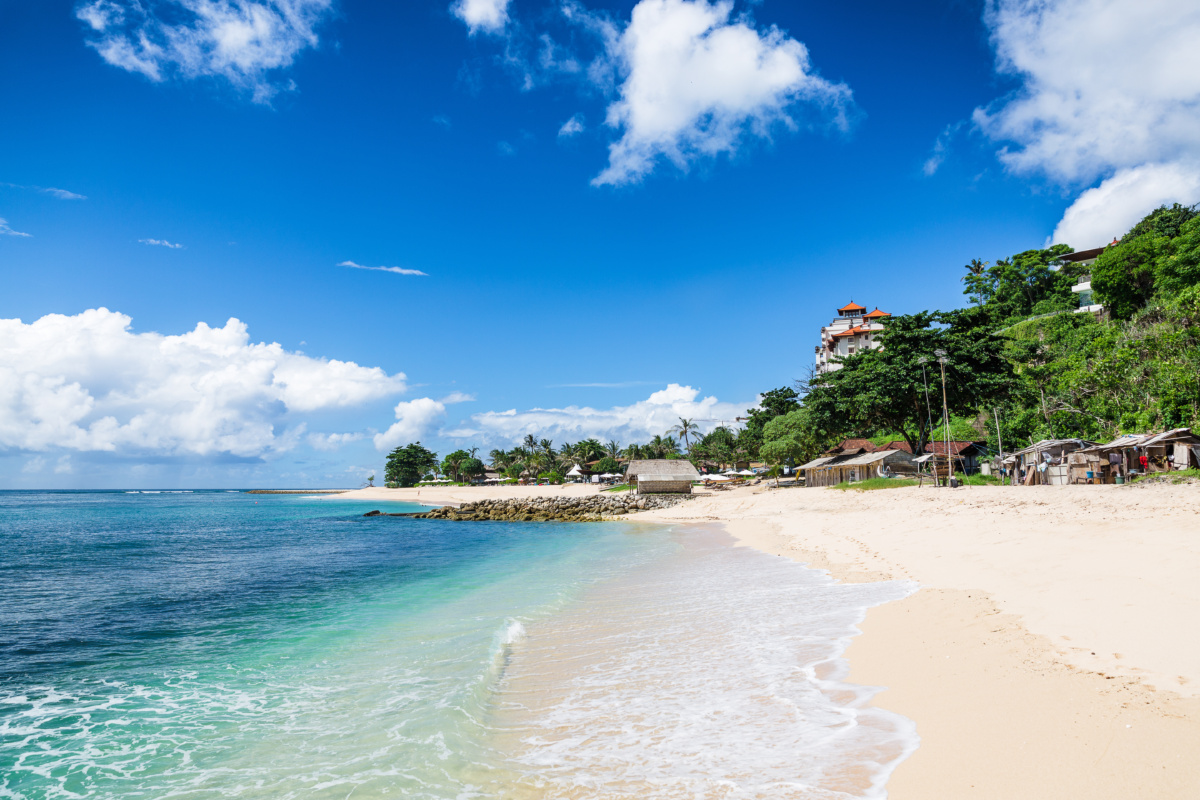Best time to visit Joshua Tree is a frequently asked question – so why not explore this amazing place today and find out what you can expect from a trip to the Joshua Tree National Park.
The Joshua Tree Park is located in south of California – yes it is in the desert and you will love it! This park is an amazing place to connect with nature in a whole new level.
Most people expect to see spectacular, quirky, spiky and timeless Joshua trees (Yucca brevifolia) the obvious thought, right? But there is so much more! The whole experience is just fantastic. From endless starry night sky; massive ancient boulders that could have come from another planet; whole fields of wildflowers that will take your breath away.
There is more! You are in for a treat if you enjoy the wildlife, and even if you don’t, you will be stunned by it, I promisse! There rare birds and wild animals and unforgettable sunsets.
We did all the research for you including the best time to visit the Joshua Tree of course 🙂 So let’s dive in and learn everything you need to know before planning your trip.
Joshua Tree National Park Interesting Facts
You will not be tested on the park facts, but your kids might ask you, so you better learn a bit about the park.
- Joshua Tree National Park was declared a national monument in 1936, and a national park in 1994. It covers 790,636 acres or 1,235.4 square miles. It includes 429,690 acres or 671.4 square miles of wilderness.
- The park includes most parts of two deserts, unique ecosystems that differ by elevation: the Mojave Desert is higher and the Colorado Desert is lower. The Colorado Desert is hotter and full of spiky cactus and the Mojave Desert is higher and cooler.
- The southern end of the park is crossed by the Little San Bernardino Mountains. The park’s oldest rocks are 1.7 billion years old.
- People (Pinto culture) have lived in the area of today’s park since 8000 BC – more than ten thousand years ago.
- More than three million people visit the park every year.
If you want to learn more (or your kids are particularly inquisitive), tell them to check the NPS website.
How To Get To Joshua Tree National Park
Joshua Tree National Park is located about 140 miles east of Los Angeles, about 175 miles northeast of San Diego, 215 miles from Las Vegas, and 222 miles from Phoenix, Arizona.
You can come to the park from Interstate 10 or California Highway 62, also known as the Twentynine Palms Highway. If you are coming from further away, the closest airport is in Palm Springs.
There are only three ways visitors can enter the park: from Yucca Valley in the west, Twentynine Palms in the north, and Cottonwood Springs in the south. The main Visitor Center is outside the park, in the nearby town of Joshua Tree.
Before entering the park, stop by the nearest visitor center for the latest information, some interesting exhibits and a little break. There are 4 visitor centers in total.
They all have a bookstore run by the Joshua Tree National Park Association. The Association supports park activities and the shops offer books and guides on wildflower identification, climbing, hiking, bird-watching, geology, native plants, stargazing, and local history.
Recommend reading:
Joshua Tree Visitor Center
If you are approaching the West Entrance of the park, you will come to the Joshua Tree Visitor Center. It is located in the village of Joshua Tree on Park Blvd. south of Hwy 62. It offers a range of exhibits, a café, a bookstore and has flush toilets on site. There are showers and public telephone nearby.
Open from 7:30 am to 5 pm
Oasis Visitor Center
This visitor center is located at the Oasis of Mara in Twentynine Palms. It offers numerous exhibits, a bookstore, drinking water, flush toilets, and plenty of picnic tables.
Open from 8:30 am to 5 pm
Cottonwood Visitor Center
This center is located near the park’s south entrance. It has a range of exhibits, a bookstore, drinking water, and flush toilets. There is a picnic area nearby.
Open from 8:30 am to 4 pm
Black Rock Nature Center
The Center is located in the popular Black Rock Campground. It has a bookstore, drinking water, flush toilets, and a picnic area.
Open from 8 am to 4 pm
The Black Rock Nature Center is closed in the summer, from June – September.
Best Time to Visit Joshua Tree
You can visit Joshua Tree park any time of the year and any time of the day or night. But the best time to visit Joshua National Park (or any other desert) is in Spring and Fall. That’s because these are the seasons with most pleasant temperatures.
In summer, you can expect extreme day temperatures that drop at night. In winter, do not be shocked to wake up to see the ground covered in snow, especially at higher elevations. Torrential rains can come unexpectedly and soak you to the bones.
The only potential problem when visiting the Joshua Tree in Spring or Fall is that you may have to share the park with a few thousand other people! The trick is to find as much information about what happens in the park in different seasons and find a fine balance between the nice weather and fewer people.
Best Time To Visit Joshua Tree For Stargazing and Camping
If you are more interested in finding out the best time to visit Joshua Tree for stargazing or the best time to camp in Joshua Tree you may not need to go during the busy times.
It makes a big difference whether you plan on seeing most of the sights from your airconditioned car or you plan to spend a lot of time hiking or backpacking.
Stargazing for example is best during Summer, so it’s important to learn what to expect during summer time at the Joshua Tree National Park and be prepared. For example, the temperature changes drastically between day time and night time, in any season. But don’t worry, we have got you covered! Check out Joshua Tree temperatures by month below:
Recommend reading:
Joshua Tree Temperature By Month
Before starting your visit, check the weather at the NPS website and bring sunscreen and shade in the hot weather, a jacket and a warm sleeping bag in winter and a raincoat during the wet months (which can be any time.)
Always bring enough water, especially if you are hiking. Plan your trip well so you do not find yourself unprepared after the sun goes down and it is difficult to see the trail.
January
You can expect temperatures between 62°F and 41°F, but it can even drop below freezing. Cold in the desert feels much colder because of the dry desert air, especially at night. Snow is rare but possible at a higher elevation.
February
Temperature ranges between 65°F 44°F but it is worth braving it because this is a season of wildflowers. They bloom in profusion at lower elevations in Pinto Basin and the southern edges of the park. If you are lucky, you will see whole fields covered in flowers and a riot of colors. February can be quite rainy, so get prepared or get wet.
Spring blooming periods depend on the winter and how much it rained. They normally start in February and peak all over the park in March and April. Cactuses may bloom all the way into June. The NPS offers updated information on wildflower blooming at www.nps.gov/jotr.
March
Temperature ranges between 72°F and 48°F, inviting visitors in large numbers. Pleasantly cool weather is perfect for hiking, bird-watching and ever-popular rock climbing. Wildflowers are offering a full spectacle in March. Stay away from the Joshua Tree National Park during the Spring Break if you do not want to share the trails with hordes of people.
April
The weather is still pleasant, with temperatures ranging between 80°F during the day and 54°F at night. The wildflowers are still in full bloom and the park is attracting a lot of people. It is a nice season to visit if you do not mind crowds and filled campgrounds and parking lots.
May
Temperatures between 89°F and 63°F are still pleasant, making May one of the favorite months to visit the park, before the summer hits and any outdoor activities become fun just for the brave and intrepid.
June
The summer is approaching, with temperatures between 98°F and 70°F. There are still some wildflowers at higher altitudes and the trails are less crowded. If you are looking for solitude, this might be a good month to visit.
July
July is one of the hottest months in the park. The temperature fluctuates between 103°F and 76°F. The heat keeps crowds away, but if you are looking for some spectacular night skies, stargazing in July is at its best. Also, it is much easier to find a place at the popular first-come, first-serve campgrounds.
Hiking is best early in the morning. Bring a lot of water, a hat and plenty of sunscreen. Thunderstorms and downpours are possible and there is a possibility of flash floods and lightning strikes. Stay under cover if they catch you outdoors.
August
With temperatures between 100°F and 75°F, outdoor activities in August are only for the brave and well-prepared. You can still drive around in your cool car and see the sights, going only on short hikes as early in the morning as possible. Always think about staying hydrated. Dehydration can come very fast at such a high temperature and it can literally kill you. Torrential downpours are possible in August.
September
Temperature is dropping a bit in September, ranging between 95°F and 68°F. The fall season is starting. It is becoming more comfortable for hiking and backpacking. Less chance of rain than in August, but occasional downpours are still possible.
October
This is one of the most popular months and the best time to visit Joshua Tree Park. Temperatures range between 83°F and 57°F, perfect for any outdoor activities, and pleasant enough at night to sleep under the stars. Plenty of people come in October, but not as many as in the Spring. October is also the month when the park celebrates the famous Joshua Tree Music Festival.
November
Temperature ranges between 69°F and 46°F. It is still pleasant enough at night to sleep outdoors but bring your warm winter sleeping bag.
December
It is winter in the park and temperature does not fluctuate so much, ranging between 60°F and 40°F. It even freezes at times. You can see snow at a higher elevation. Sleeping in a tent is not such a comfortable solution so look for one of the nice glamping sites around the park.
How much does it cost?
Joshua Tree National Park does not offer a daily pass, but you can get a weekly pass for $30 and an annual pass for $55.
If you visit national parks often, your best option is annual America the Beautiful national park pass for $80. You can use it to get into every national park in the country, as well as into national forests and historic sites.
Tip: On some days, entrance into the park is FREE:
- Martin Luther King, Jr. Day, on every 3rd Monday in January;
- First Day of every National Park Week on 3rd Saturday of April;
- Great American Outdoors Act Signing Day on August 4;
- National Park Service Birthday on August 25;
- National Public Lands Day on every 4th Saturday in September and
- Veterans Day on November 11.
Exploring The Joshua Tree National Park
The park includes two very different deserts—the Mojave and Sonoran. From the deserts, it drops down into the Coachella Valley close to Palm Springs. The two desert systems separate this California’s very popular southernmost national park into two arid but very different ecosystems with an extremely different look. What makes such a difference is elevation.
Sonoran Desert
The western end of the vast Sonoran Desert, Colorado, located below 3,000 feet, forms the park’s gently sloping eastern flank. The temperatures there are usually higher. It is considered “low desert,” compared to the higher, wetter, and more green Mojave “high desert.” The Colorado appears sparse and daunting, covering the park’s middle area, with empty basins covered in creosote bushes.
Only occasionally you can see its prettier side, “gardens” of blooming ocotillo and cholla cactus. From the arid Pinto Basin, Colorado continues into a dry wilderness filled with the broken rock of the Eagle and Coxcomb Mountains.
Mojave Desert
Above 3,000 feet is the Mojave western half of the park. You will recognize it by giant branching yuccas known as Joshua Trees, which thrive on sandy soil covered by massive granite boulders and rock piles. This spectacularly beautiful area is a photographers’ dream.
While you can hike or drive through the park enjoying every minute of the magnificent beauty around you, there are some spots you should not miss:
The Black Rock Canyon is located just south of Yucca Valley, in the northwestern part of the park you will see the park’s most beautiful Joshua tree forest.
Cottonwood Spring, located in the Colorado Desert, about seven miles from the park’s South Entrance, has an intriguing cultural history linked to the Cottonwood Spring Oasis. This place is great for bird watching and hiking.
Covington Flats, located in the northwestern area of the park, has some of the Joshua park’s oldest and biggest Joshua trees, plenty of junipers, and pinyon pines.
The 3.8 miles (6.2 km) trail leads from the Covington Flats picnic area to Eureka Peak, which offers spectacular views of Palm Springs, the Morongo Basin and the surrounding mountains.
Indian Cove has a popular campground snuggled between massive rock formations. It is very popular with rock climbers. The camp also includes a nature trail and a trail to the Wonderland of Rocks. It is located about 13 miles east of Joshua Tree Village and almost ten miles west of Twentynine Palms,
Keys View is the place with the views. Keys Views is located on the top of the Little San Bernardino Mountains, it’s 20-minute drive from Park Boulevard. You can see the Salton Sea on the left, 230 feet below sea level. On the right are the Santa Rosa Mountains behind Indio and.
The 10,800-foot San Jacinto Peak is behind Palm Springs, and on a clear day, you can see a snow-covered 11,500-foot tall peak of San Gorgonio Mountain.
Skull Rock is the home of the massive granite skull-shaped rock and one of the most popular spots in the park. It is located not far from Jumbo Rocks Campground.
The Best Time To Visit Joshua Tree Park By Car
Most people come to the park to see the spectacular forests of giant spindly yuccas we know as Joshua trees, strange massive boulder formations, oases of fan palm, and blooming gardens of cholla and ocotillo. All of them can be seen and enjoyed during a pleasant half-day auto tour that covers both “high” and “low” desert zones.
Any time of the year is great for such a short, leisurely visit, as long as you avoid the holidays and weekends when the parking lots get filled very fast. Of course, you will have the most out of your trip if you come while the fields are covered in wildflowers, from February to April.
You can spend most of the visit in your car, or you can venture on short hikes to the nice viewpoints. Trailheads are also near the roads if you want to park your car and explore a bit more on foot. There are very informative roadside exhibits at the pull-outs and parking areas. They tell the story of the park’s fascinating desert ecology, geology, wildlife, and human history.
The height of summer, when very few people venture into the park, is also great for a short visit in your car. You will have the park practically to yourself. Enjoy short strolls out of the car, take a lot of photos and stay hydrated at all times.
Itinerary Suggestion
Start the drive from Park Boulevard, which keeps going over Sheep Pass into Queen Valley, where you can see another wonderful Joshua tree forest. The Motor Geology Road runs for 18 miles south through the valley. There are 16 stops where you can read the informative exhibits along the way.
At the valley’s eastern edge you can see the mysterious Skull Rock, a massive granite boulder looking like a skull. On the way out of the valley, Park Boulevard turns north towards a lush palm grove called Oasis of Mara, located next to the Oasis Visitor Center.
The Best Time To Visit Joshua Tree Park By Bike
The best time to visit Joshua Tree park by mountain bike depends on how long do you want to stay and how much water you are carrying. Stay away from the main roads, they are narrow and do not have shoulders. Enjoy the solitude and safe biking through the park’s dirt roads, many created in the 19th-century during the homestead and gold-mining era.
Get a good map and check the weather before leaving the visitors’ center. You can come any time of the year, but travel early morning in the summer and rest in shade at the hottest part of the day.
The rains are your worst enemy, so watch for downpours and flash floods in the summer, especially July, August and September.
Hikers’ Heaven
Hiking through the Park is really the best way to see it and appreciate its unique magic. The best time to visit Joshua Tree Park hiking can be in any season, depending on what you are looking for.
There are plenty of short trails you can access after parking your car. For serious hikers and backpackers, more challenging trails start from the Hidden Valley area. Some of the most popular are the eight-mile long Boy Scout Trail that will take you into the boulder-covered Wonderland of Rocks and the 35-mile long California Riding and Hiking Trail. California trail is normally undertaken as a two or three-day trip.
Recommended reading:
There is a marked moderately difficult trail to the summit of 5,456-foot Ryan Mountain. An easy cruise on the paved road will take you to Keys View at the top of the Little San Bernardino Mountains. You will enjoy a mile-high vista of the Salton Sea, Coachella Valley and San Andreas Fault.
One of the best times to enjoy that view is in the evening or at night when you can see Palm Springs glowing with millions of lights.
Biking through the Joshua Tree park is possible any time of the year as long as you carry enough water, rest in the shade during the hottest part of the day and plan accordingly.
Biking in the height of summer or during cold winter months will award you with splendid solitude, as long as you are prepared for the shocking change in temperature between day and night. Returning in the evening to a comfortable hotel or campground is a good idea.
Where to Stay
There are no hotels in the park, but you can find a perfect hotel for any budget in Joshua Tree and Twentynine Palms. Check Booking.com for the one that works for you.
There are nine campgrounds in the park, and two with horse camps. Black Rock Campground and Cottonwood Campground have water and flush toilets. There is a fee per night for each spot. You can make a reservation in advance at Indian Cove Campground, Cottonwood Campground, Black Rock Campground, and Jumbo Rocks Campground. Other campgrounds are on first-come, first-grab it.
For those on a budget or those who like to rough it, backcountry camping is permitted one mile (1.6 km) from roads, 500 feet from any trails and water sources, and in areas that are not reserved for day-use only.
Recommended reading:
Before setting out into the backcountry, you must first register at one of the following backcountry boards. Check their list on the park’s backpacking page.
Where to Eat
There are no restaurants in the park, so you will have to carry what you need or return to the nearby communities for a nice meal. Eating around the campfire is one of the great pleasures of camping in the park, surrounded by ancient boulders, miles of sand and millions of stars overhead.
Conclusion
One of the most beautiful and most daunting parks in the country, Joshua Tree is worth visiting in any season. But, if you can choose, the best time to visit Joshua Tree is in Spring and Fall, when the temperatures are less extreme, you can hike to your heart’s content and spend the night under the stars staring at the Milky Way in awe.
If you are a solitary creature and you are willing to sacrifice a bit of comfort for empty trails and a quiet desert expanse, for you any time is the best time to visit Joshua Tree. Just plan well and get the latest information about the weather from the NPS website. Load plenty of water and food, get plenty of sunscreen, a hat and a rain cover.
Sleeping outdoors is a treat but even in the summer, get prepared for the drastic drop in temperature. As in every park, do not leave anything behind except footsteps. Do not take anything with you but photos and memories.
Recommeded reading:
South Lake Tahoe Beaches – Ultimate Guide To A Fun Vacation
